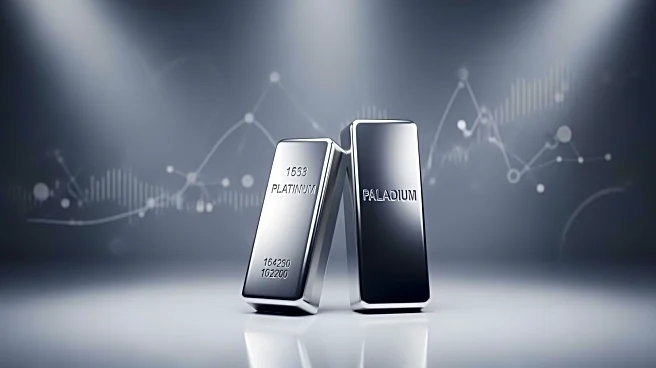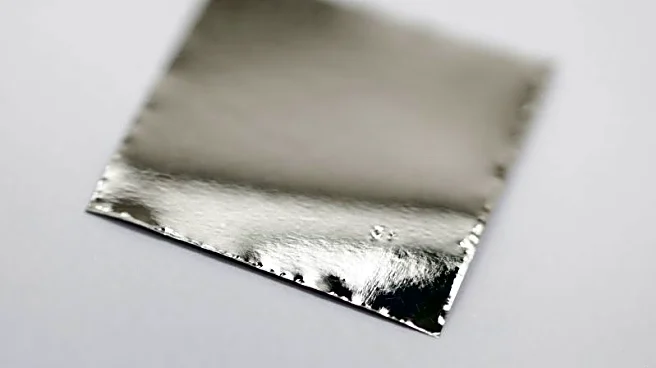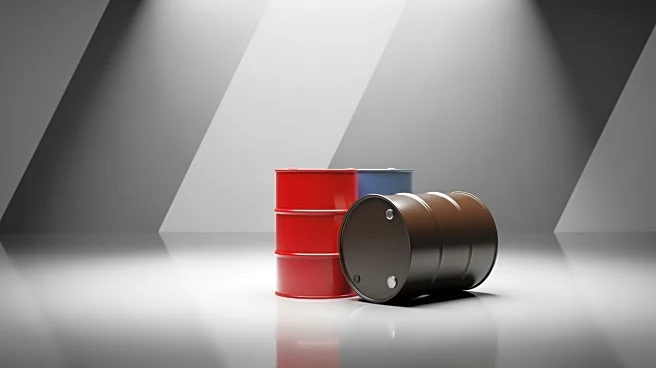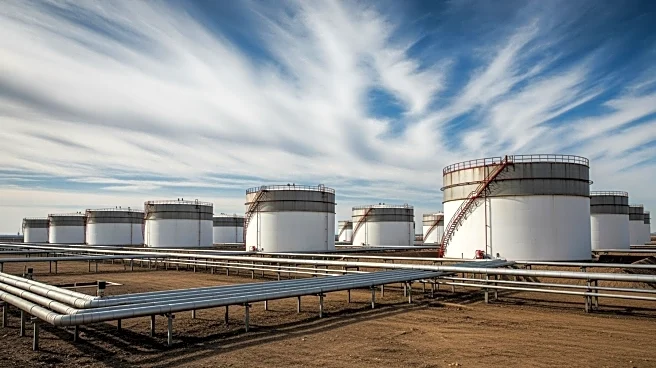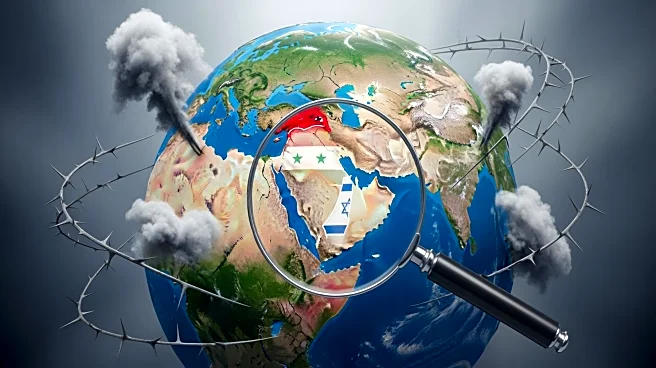What's Happening?
Analysts have significantly increased their price forecasts for platinum and palladium for 2026, driven by tight mine supply, tariff uncertainties, and a shift in investment demand from gold. Platinum
is expected to achieve its best yearly performance, while palladium is set to mark its best year since 2017. Spot prices for platinum and palladium have risen by approximately 76% and 56%, respectively, this year, supported by gold's record-breaking rally and outflows to U.S. stocks. Standard Chartered analyst Suki Cooper anticipates platinum prices to test higher highs and remain deeply undersupplied in 2026. Factors influencing platinum include the potential launch of a futures contract in China, muted jewelry demand, and outflows from platinum-backed exchange-traded funds. The median forecast for platinum is $1,550 per troy ounce in 2026, up from $1,272 predicted three months ago. Palladium faces challenges due to potential U.S. tariffs on imports from Russia, with a median forecast of $1,262.50 per ounce for 2026.
Why It's Important?
The revised forecasts for platinum and palladium prices reflect significant shifts in the global metals market, impacting U.S. industries reliant on these materials. The anticipated price increases could affect sectors such as automotive manufacturing, where palladium is used in catalytic converters, and jewelry production, which utilizes platinum. The uncertainty surrounding U.S. import tariffs on critical minerals could further influence market dynamics, potentially leading to increased costs for U.S. manufacturers and consumers. Additionally, the shift in investment demand from gold to platinum and palladium highlights changing investor strategies in response to geopolitical and economic conditions. These developments may lead to increased volatility in the metals market, affecting stakeholders across the supply chain.
What's Next?
The market is awaiting clarity from a U.S. probe into potential new tariffs on imports of critical minerals, which could provide more direction for platinum group metals. The outcome of this investigation may influence future pricing and availability of these metals in the U.S. market. Additionally, the potential launch of a platinum futures contract in China could impact global pricing and demand. Stakeholders, including manufacturers and investors, will need to monitor these developments closely to adapt their strategies accordingly. The ongoing discussions around tariffs on Russian palladium imports could also shape future market conditions, with potential implications for U.S.-Russia trade relations.
Beyond the Headlines
The evolving dynamics in the platinum and palladium markets may have broader implications for global trade and economic policies. The potential introduction of tariffs on critical minerals could lead to shifts in international trade agreements and impact diplomatic relations. Furthermore, the increased focus on electric vehicles and their impact on palladium demand highlights the intersection of environmental policy and market trends. As the automotive industry transitions towards greener technologies, the demand for traditional metals used in gasoline vehicles may decline, prompting further innovation and adaptation within the sector.
